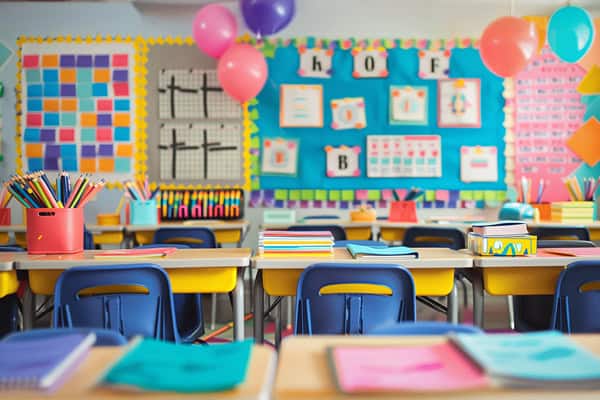Every teacher designs their classroom with the same goal: create an engaging and welcoming environment for students, writes Kelsey Tygrett of Greenbrier County Schools in an eSchool News column. She offers five inexpensive ways to create an inviting and engaging learning space for students.
1) Create a theme
“A classroom theme gives a room personality and ties the decor together. It can inspire many themed lessons over the school year as well.
“Working with a theme also makes it a bit easier to identify what decor and supplies you need and what you don’t. This can be critical to keeping to your budget because you can allow yourself to only purchase items that are on theme.
“A classroom theme also creates a lot of excitement among students because they’re no longer entering a classroom, they’re going to a tropical island, diving deep into the sea, or launching into outer space–there are so many possibilities.
2) Introduce new elements to align with lessons
“Students are always wowed when their classroom has something new, and it keeps their engagement up throughout the school year. This does not mean a complete overhaul of the classroom needs to happen every few months. But, introducing new decor here and there in the classroom that aligns with new lessons or holidays can be a fun surprise for students.
“…Additional decorations can be costly, especially when teachers have already decorated their entire classroom once. You can look at discount stores and marketplaces to decorate on a budget, or even opt to DIY new classroom decor.
3) Display student work
“Students’ work can be another great–and cost-effective–piece of classroom decor. When students see their work on the classroom walls, it instills a sense of pride and accomplishment. The goal of getting work displayed in the classroom can also motivate them to do their best work and up their engagement.
“Beyond increasing students’ confidence, displaying student work can boost their memory on the material. It also allows students to learn from each other, opening them up to different ideas and perspectives that they may have not thought of initially themselves.
4) Consider the layout
“A classroom’s layout is just as important as what’s on the walls. Arranging desks in clusters, horseshoes, combinations, and more to encourage collaboration among classmates can promote discussion and peer learning. Introducing flexible seating options such as reading couches or cozy nooks can break up the day and reset students’ focus and concentration.
“Changing up how desks are arranged for certain activities can also be beneficial. For example, students would benefit more from group activities if their desks were together in a cluster, while spaced out desks are better for tests and other individual work. If students have assigned seats, consider moving them every so often so they can engage with other students.
5) Set a goal and display it
“Whether it’s a daily objective, a weekly challenge, or a long-term goal, having something for students to strive for can keep them motivated in the classroom. Display the goal at the front of the class, or in another prominent place, to easily remind students what they’re working towards. In addition to the goal itself, a chart or checklist that allows students to see their progress will also motivate them to achieve the goal. All of this can be DIYed to keep costs low.
“Teachers don’t need to spend hundreds of dollars on their classrooms. With some creativity and DIY power, teachers can create their dream classrooms that engage their students to the fullest,” Tygrett writes.
eSchool News





